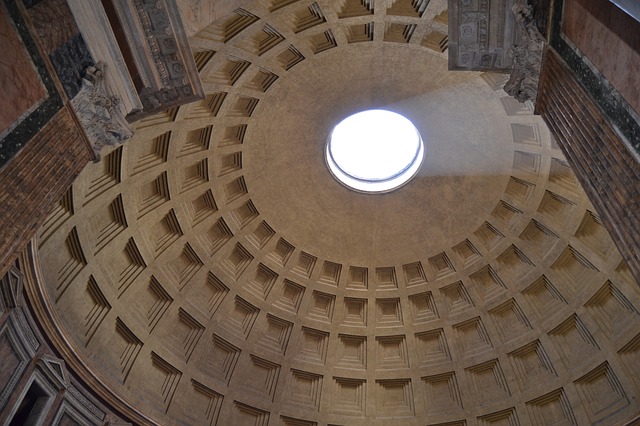Aesthetics and architecture
Aesthetics is a branch of philosophic study that relates to the nature and expression of beauty and taste; in other words, the appearances of things. It is derived from the Greek word ‘aisthetikos’, which refers to sensory perception and understanding or sensuous knowledge. As aesthetics concerns an appreciation of beauty, it is influenced by the subjective taste of an individual.
Like painting and sculpture, architecture can be considered a visual art to which the philosophy of aesthetics can be applied. However, this application of aesthetics to buildings and architecture is complicated by the physical requirements of the brief, budget, structure, regulations, climate, weather, and so on, meaning that building design is driven by form and function as well as aesthetics.
When architects design buildings, they use a creative process to rationalise these different requirements to create a unified whole. For more information, see Concept architectural design.
Aesthetic considerations in architecture might include:
- Line.
- Shape.
- Size.
- Texture.
- Colour.
- Balance.
- Unity.
- Movement.
- Emphasis/contrast.
- Symmetry.
- Space.
- Alignment.
- Culture.
- Context.
For more information, see Design principles.
[edit] Related articles on Designing Buildings Wiki
- Aesthetic movement.
- Aesthetics and performance.
- Architectonics.
- Architectural history.
- Architectural styles.
- Building design.
- Concept architectural design.
- Context.
- Contextualism.
- Design intent.
- Design methodology for building projects.
- Design principles.
- Dwarf gallery.
- Ergonomics in construction.
- Form follows function.
- Gothic architecture.
- Monument and context.
- Perspective.
- Towards a radical eclecticism.
- Traditional building.
- Truth to materials.
Featured articles and news
RTPI leader to become new CIOB Chief Executive Officer
Dr Victoria Hills MRTPI, FICE to take over after Caroline Gumble’s departure.
Social and affordable housing, a long term plan for delivery
The “Delivering a Decade of Renewal for Social and Affordable Housing” strategy sets out future path.
A change to adoptive architecture
Effects of global weather warming on architectural detailing, material choice and human interaction.
The proposed publicly owned and backed subsidiary of Homes England, to facilitate new homes.
How big is the problem and what can we do to mitigate the effects?
Overheating guidance and tools for building designers
A number of cool guides to help with the heat.
The UK's Modern Industrial Strategy: A 10 year plan
Previous consultation criticism, current key elements and general support with some persisting reservations.
Building Safety Regulator reforms
New roles, new staff and a new fast track service pave the way for a single construction regulator.
Architectural Technologist CPDs and Communications
CIAT CPD… and how you can do it!
Cooling centres and cool spaces
Managing extreme heat in cities by directing the public to places for heat stress relief and water sources.
Winter gardens: A brief history and warm variations
Extending the season with glass in different forms and terms.
Restoring Great Yarmouth's Winter Gardens
Transforming one of the least sustainable constructions imaginable.
Construction Skills Mission Board launch sector drive
Newly formed government and industry collaboration set strategy for recruiting an additional 100,000 construction workers a year.
New Architects Code comes into effect in September 2025
ARB Architects Code of Conduct and Practice available with ongoing consultation regarding guidance.
Welsh Skills Body (Medr) launches ambitious plan
The new skills body brings together funding and regulation of tertiary education and research for the devolved nation.
Paul Gandy FCIOB announced as next CIOB President
Former Tilbury Douglas CEO takes helm.
UK Infrastructure: A 10 Year Strategy. In brief with reactions
With the National Infrastructure and Service Transformation Authority (NISTA).























